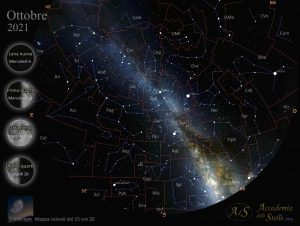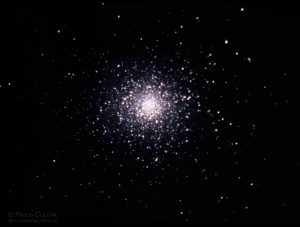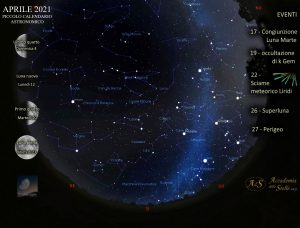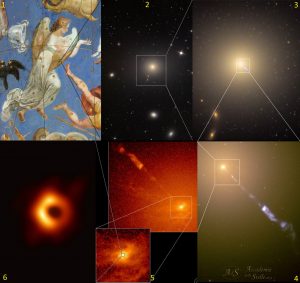Astronomia
Il Cielo del Mese – Ottobre 2021
Che forma hanno i corpi celesti?
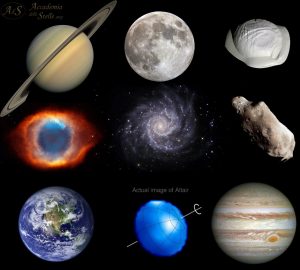
Alcuni astri: Saturno, Luna, Pan (luna di Saturno), nebulosa planetaria Elica, galassia a spirale M74, asteroide Ida, Terra, Altair, Giove.
Perchè i corpi celesti di grandi dimensioni assumono tutti la forma sferica? Esistono corpi celesti di grandi dimensioni, che non siano sferici? Continua a leggere
I Nomi della Luna Crescente
 Quando l’osservazione del cielo e della Luna erano molto importanti, ogni singola fase del nostro satellite aveva un nome! Ecco tutti i nomi della Luna crescente Continua a leggere
Quando l’osservazione del cielo e della Luna erano molto importanti, ogni singola fase del nostro satellite aveva un nome! Ecco tutti i nomi della Luna crescente Continua a leggere
Il Cielo del Mese – giugno 2021

Il cielo del 15 giugno alle ore 23
Il Cielo del Mese – maggio 2021
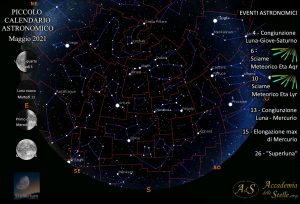 ✨⭐️ Stelle e pianeti a maggio 2021: calendario dei principali eventi astronomici osservabili in cielo a Maggio 2021: luna, stelle e costellazioni, pianeti, meteore: congiunzioni, eclissi, allineamenti planetari. Continua a leggere
✨⭐️ Stelle e pianeti a maggio 2021: calendario dei principali eventi astronomici osservabili in cielo a Maggio 2021: luna, stelle e costellazioni, pianeti, meteore: congiunzioni, eclissi, allineamenti planetari. Continua a leggere
Quasar 3C 273 nel Telescopio Spaziale Hubble
I quasar sono le sorgenti energetiche stabili più potenti dell’universo: il loro motore gravitazionale basato su un buco nero può raggiungere luminosità inconcepibili, pari a quella di centomila miliardi di Soli.
Il più luminoso quasar visibile in cielo si può osservare a orari comodi in questo periodo. Continua a leggere
L’ammasso globulare M5
Il Cielo del Mese – aprile 2021
️ È il mese in cui Orione sparisce dal cielo e la notte astronomica ritarda e si riduce sempre più: arriva alle 21 a inizio mese mentre bisogna attendere le 22 a fine mese per avere un cielo completamente buio. Continua a leggere
Nuova luce sul buco nero di M87
Due studi appena pubblicati riguardano nuove analisi del buco nero centrale di M87 mettendo in evidenza la polarizzazione della luce e la presenza di intensi campi magnetici. Si ritiene che siano questi ultimi a produrre i potenti getti relativistici che, dal cuore di quella galassia, lanciano materia sotto forma di plasma a distanza di migliaia di anni luce Continua a leggere
Il Cielo di Marzo 2021
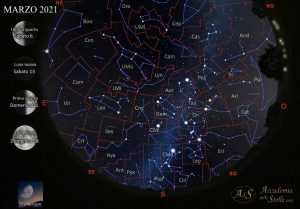 STELLE E PIANETI IN CIELO A MARZO
STELLE E PIANETI IN CIELO A MARZO
Arriva la primavera (l’equinozio avverrà il 20 marzo alle 10.47), le notti si accorciano e il cielo si riempie di… galassie! Continua a leggere
